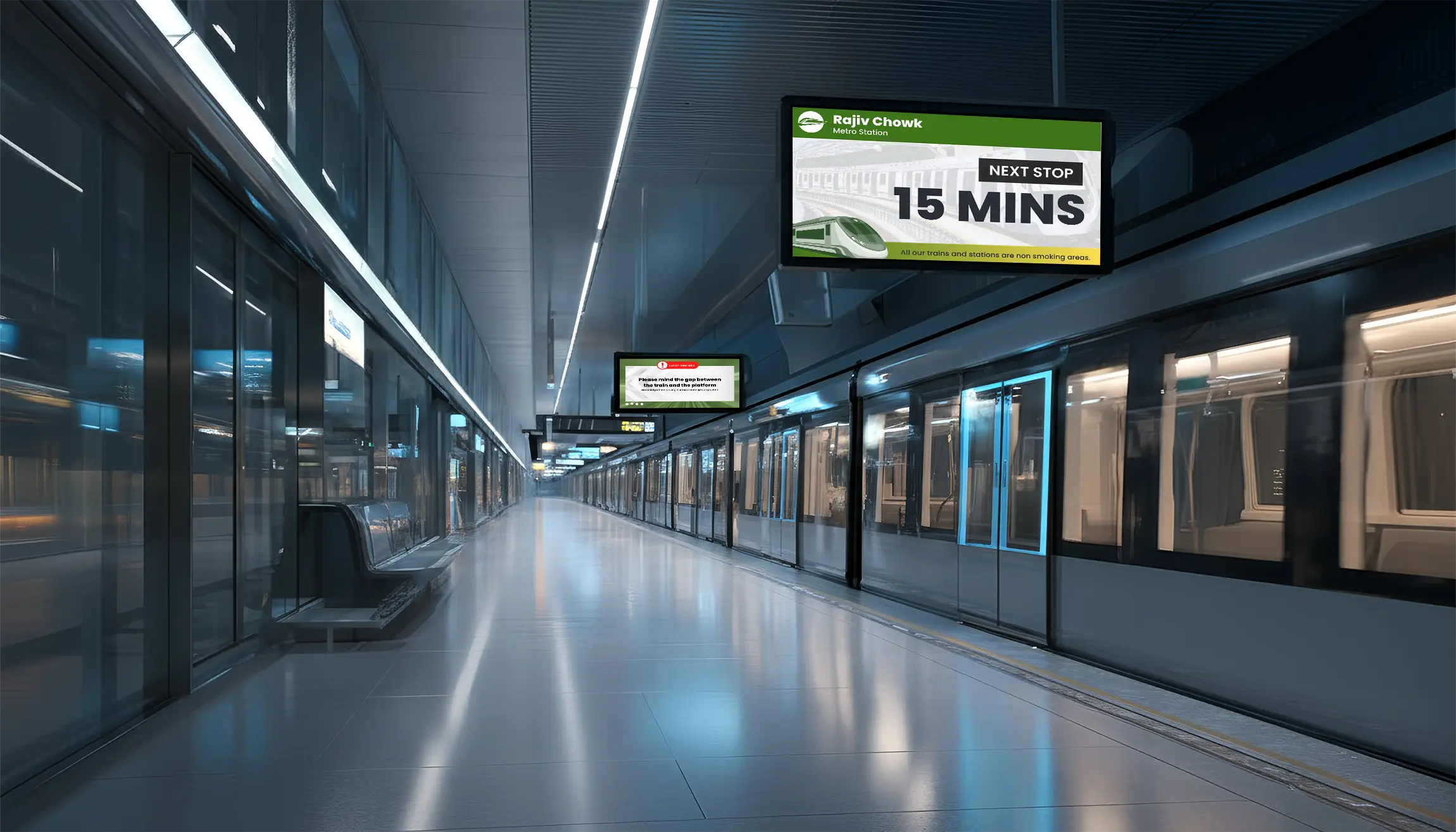Top 3 Digital Signage Problems (And How to Solve Them)
by Scala Team
Top 3 Digital Signage Problems (And How to Solve Them)
by Scala Team

Lack of Quality Content
Poor content quality is one of the most common digital signage problems. Poor content can be caused by:
- a lack of understanding of the target audience
- poor design
- lack of planning and
- outdated and repetitive content.
The risk you run with lacklustre or repetitive content is that your brand may appear unprofessional, and your audience may lose faith in your business as a result, as well as become bored with your content.
The fix:
Know your audience and brand
Understand your target audience and brand to create the right content. The look and feel of your content, as well as the messaging, needs to be aligned with your audience personas and brand image.
Use good design principles
We break down in detail what makes for attractive digital signage in this blog, but to summarise, when designing digital signage content you should design with the correct resolution and aspect ratio, choose high quality, eye-catching images, choose the right font and text style, ensure sufficient contrast and legibility. It’s also a good idea to be aware of colour meaning and perception, and employ focus techniques to guide the eye to critical information first.
Use a robust digital signage content management system (CMS)
A good content management system like Scala Content Manager is key to the success of your digital signage. A CMS allows you to plan, pre-schedule and publish content ahead of time, and includes the ability to unpublish content once it is out-of-date.
Use a content calendar
Plan content ahead of time using a digital signage content calendar. This can be as simple as a Google Sheet, Word document or an online calendar tool.
Have plenty of backup content
Create engaging filler content to use for gaps in the calendar. This kind of content can be slotted in at any time to fill spaces in the calendar to that you are never left with blank or outdated screens. General brand content, smart visuals and generic branded videos are great examples.
Poor Display Placement
Poor placement of your digital signage displays can lead to a lack of visibility and engagement. Bad placement includes putting displays in out-of-the-way locations where few people will see it, in dark corners, or at an awkward height (e.g. well above or below eye level). To be effective, your digital displays also shouldn’t be obstructed by shop fixtures, merchandise displays or any other objects.
The fix:
Place displays in high traffic and high dwell areas
Ideal locations for your displays include highly visible public areas of your store or business, such as busy walkways, entrances and exits and point of sale areas. Anywhere where customers dwell, like waiting areas, foyers and queues are also a great opportunity to capture attention with digital signage.
Install displays at eye level
It’s simple: if your displays are above or below average eye level, most people aren’t going to see your content. Place your displays so the most important part of your content meets people right at eye level for maximum visibility.
Choose optimum light levels
Consider the lighting and other environmental factors that can affect visibility. Don’t place displays in poorly lit areas, but also don’t place them in locations with high levels of reflective light as this may make affect the visibility of the content on your screens.
Blank displays and error messages
Digital signage screens or displays can be blank or malfunction due to a variety of factors, including power outages, hardware or software malfunctions, or network issues. Poor maintenance especially can lead to a lack of reliability and performance. Nothing looks worse to your customer than broken displays, blank or offline screens and error messages in place of great content and can lead to a lack of trust in your brand.
The fix:
To solve this problem, it is important to ensure that all elements of your digital signage are regularly maintained, secured and updated.
Keep up to date with your maintenance
Maintaining your digital signage includes repairing or replacing faulty displays and media players, as well as ensuring your software is up to date and secure. Your Annual Maintenance Contract (AMC) is key to this and ensures your digital signage provider can give you essential updates and fixes to keep things operating smoothly, as well as keep your digital signage protected against security risks.
Secure your displays
Your displays should be well secured to prevent tampering and damage. Use locks, protective casing and other security features where necessary, especially if your displays are in highly accessible locations.
Ensure hardware and software are up to date
This point is linked to the point about maintenance above, but applies equally here as poorly maintained systems can lead to errors that cause blank displays.
Test your connection
Digital signage usually requires internet connectivity to be able to regularly download content updates and ensure smooth playback. Regularly testing the network connection ensures your digital signage systems are supported.
Have a backup power source
Having a backup power source in place means you can continue to power your displays during outages.
Trust Scala for the ultimate reliable digital signage
Scala has the expertise and experience to provide reliable digital signage solutions for any business. Get in touch today to see how you can transform your business with digital signage.
About the Author:
Scala digital signage experts share their experience and thoughts in our blog to provide practical tips and advice for real-world applications. Our team aims to offer interesting content through a variety of formats including long form articles, video logs, interviews and infographics.




